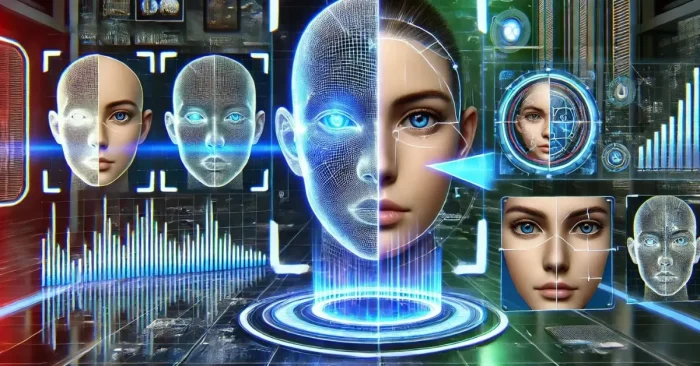AI Detection Tool
In the modern digital age, Artificial Intelligence (AI) is transforming how we create, share, and consume information. With the rise of AI-generated text, images, and even videos, one major concern is distinguishing between human-created and machine-generated content. This is where an AI detection tool becomes crucial. These tools are designed to analyze content and determine whether it has been produced by a human or an AI system. In this guide, we will explore what AI detection tools are, how they work, their applications, challenges, and what the future holds for this evolving technology.
Understanding AI Detection Tools
An AI detection tool uses advanced algorithms, natural language processing (NLP), and machine learning models to identify whether content was created by AI. As AI content generators become increasingly sophisticated, detection tools help maintain transparency, authenticity, and trust online. They are especially important for education, publishing, journalism, and research, where accuracy and originality matter the most.
How AI Detection Tools Work
AI detection tools scan text or media and look for specific patterns.. These tools often provide a probability score indicating whether the content is likely AI-generated.
Applications in Education
Students now have access to AI writing assistants that generate essays, reports, or homework. While useful, this raises concerns about academic integrity. Schools and universities use AI detection tools to ensure assignments are authentic and reflect the student’s own work, helping maintain fairness in education.
Use in Journalism and Media
With deepfakes and AI-generated news stories on the rise, it has become difficult to separate truth from fiction. Journalists rely on AI detection tools to verify the authenticity of articles, images, and videos before publishing. This helps combat misinformation and protects the credibility of news organizations.
Business and Corporate Applications
Companies use AI detection tools to ensure that marketing materials, product reviews, and reports are original. They also help detect fraudulent customer feedback that may have been automatically generated, safeguarding brand reputation and consumer trust.
Cybersecurity Benefits
Cybercriminals are now using AI to create phishing emails, fake websites, and deceptive messages. AI detection tools play a critical role in cybersecurity by spotting suspicious content and preventing scams before they spread widely.
Challenges in AI Detection
One of the biggest challenges is that AI content keeps getting more advanced. As generative AI models improve, detection tools must constantly adapt. False positives (human content marked as AI) and false negatives (AI content missed by the tool) remain concerns. No tool is 100% accurate, and human oversight is still needed.
Examples of AI Detection Tools
Popular tools include Turnitin’s AI Writing Detector, GPTZero, Copyleaks, and Writer.com’s AI Content Detector. These platforms are used in schools, businesses, and publishing to analyze content. Many of them provide a confidence percentage to help users make informed decisions.
The Ethical Debate
AI detection tools spark debate about privacy, fairness, and responsibility. While they help maintain authenticity, some argue they can unfairly penalize students or writers if the detection is inaccurate. Balancing technology with human judgment is essential for ethical use.
The Future of AI Detection Tools
As AI continues to evolve, detection tools will become smarter and more accurate. Future systems may integrate blockchain for content verification, real-time monitoring for online platforms, and enhanced AI models that can recognize even the most subtle patterns. Ultimately, the goal is to create a safe, transparent, and trustworthy digital environment where humans and AI coexist responsibly.
FAQs on AI Detection Tools
1. How accurate are AI detection tools?
Most tools are fairly accurate but not perfect. Accuracy depends on the tool’s algorithm and the complexity of the AI-generated content. Many provide probability scores rather than absolute answers.
2. Can AI detection tools identify all types of AI content?
No, they cannot detect everything. While effective for text and images, some highly advanced AI-generated media may bypass detection. Continuous updates are needed to improve reliability.
3. Are AI detection tools free to use?
Some platforms offer free versions with limited features, while advanced tools for businesses and institutions often require paid subscriptions for full functionality.
4. Do AI detection tools work in multiple languages?
Yes, many AI detection tools support multiple languages, but their accuracy can vary depending on the language and available training data.
AI detection tools are becoming an essential part of the digital landscape. They help ensure authenticity, protect academic and professional integrity, and combat misinformation. While challenges remain, the continuous development of these tools shows promise for a more transparent and secure digital future.
















